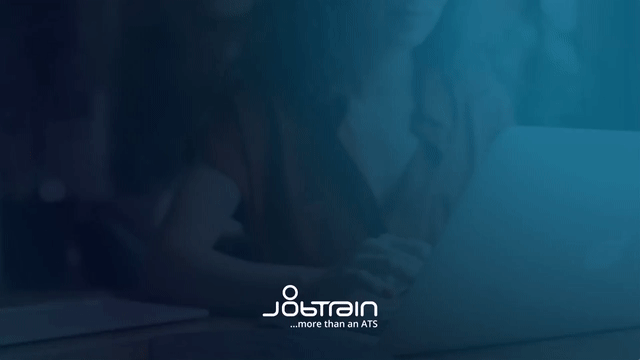1 - Why is the candidate experience so important?
2 - The Awareness Stage
3 - The Consideration Stage
4 - The Interest Stage
5 - The Application Stage
6 - The Selection Stage
7 - The Onboarding Stage
-What’s best practice when looking at the candidate experience in 2023?
-What do candidates want?
-What is the typical journey that a candidate will go through?
Giles Heckstall-Smith – Director of Strategic Communications at Jobtrain – was joined by Clair Bush – Fractional Chief Marketing Officer at Thrive – and Sophie Manifold – People Transformation Consultant at the British Red Cross – to discuss the candidate experience.
As Jobtrain is an applicant tracking system provider, we’re really passionate about recruitment technology, but there are numerous practical tips that we discussed in our latest webinar. Watch the full recording below or read on for a brief summary!
Why is the candidate experience so important?
We’ve heard that candidate drop-off is a real concern for organisations looking to buy a new applicant tracking system. Often there are simple fixes that can help teams retain their candidates through each step of the candidate journey, such as keeping job descriptions simple and clear, or reducing the length of application forms to the key questions.
Sophie: The candidate experience is so all-encompassing. It touches on so many elements and really is the core element of talent acquisition, and it’s so easy to get it wrong too!
Clair: Absolutely, it’s the bedrock of any campaign and one of the foundational building blocks for growing a business.
What are the key stages of the candidate journey?
Awareness
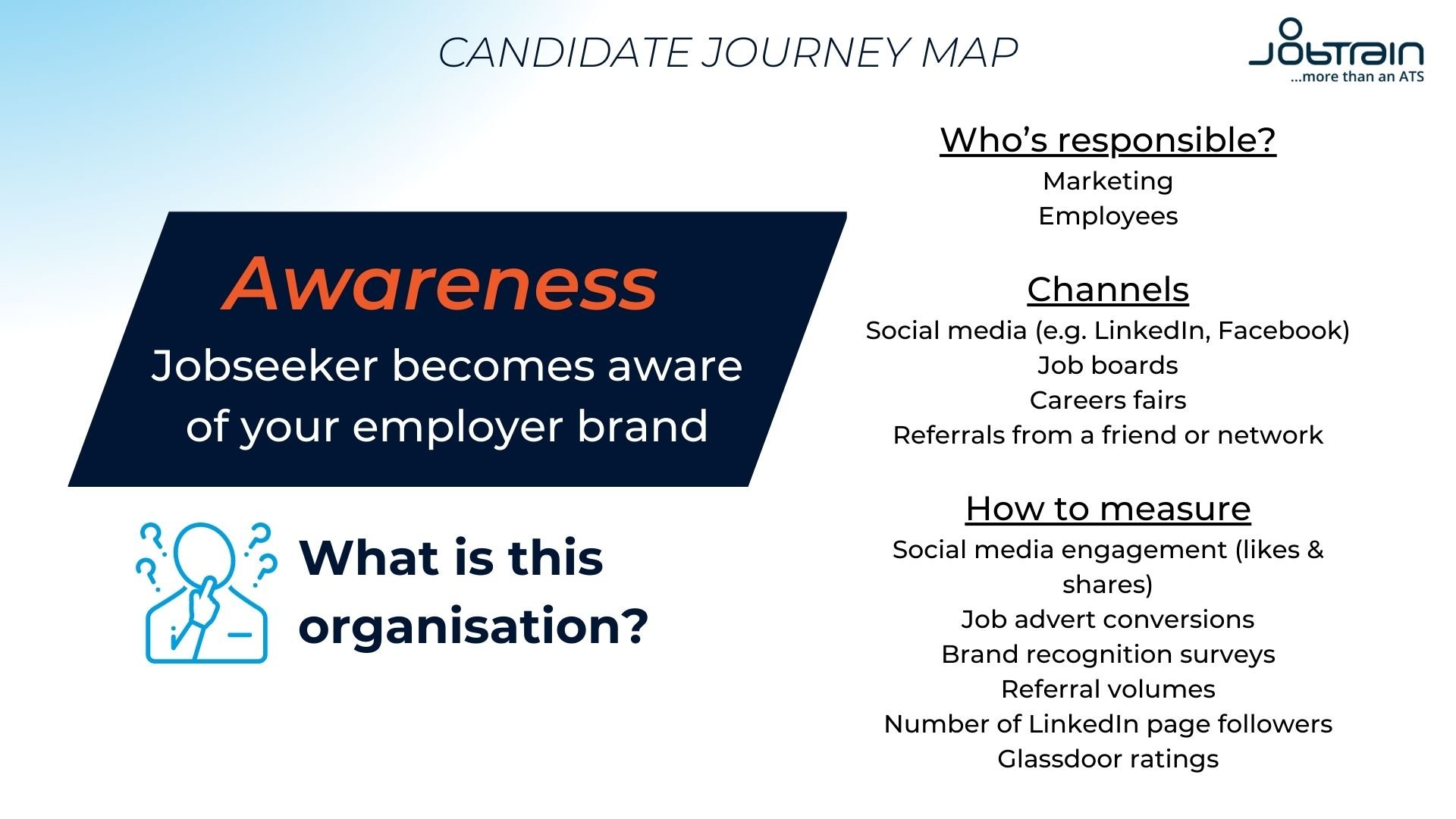 Clair: A key task comes before the awareness stage, and that’s creating the profile of your ideal candidate. What are the characteristics of your key audience? Who do you want to join your organisation? If you have that clear right at the start, you can make their journey much more fulfilling.
Clair: A key task comes before the awareness stage, and that’s creating the profile of your ideal candidate. What are the characteristics of your key audience? Who do you want to join your organisation? If you have that clear right at the start, you can make their journey much more fulfilling.
Sophie: it’s really important to think about who you’re trying to target so you avoid a less-effective scatter-gun approach. It’s not just about increasing your applications, it’s about increasing your applications from the right people. So I would also say that starting at a stage pre-awareness is important.
Consideration
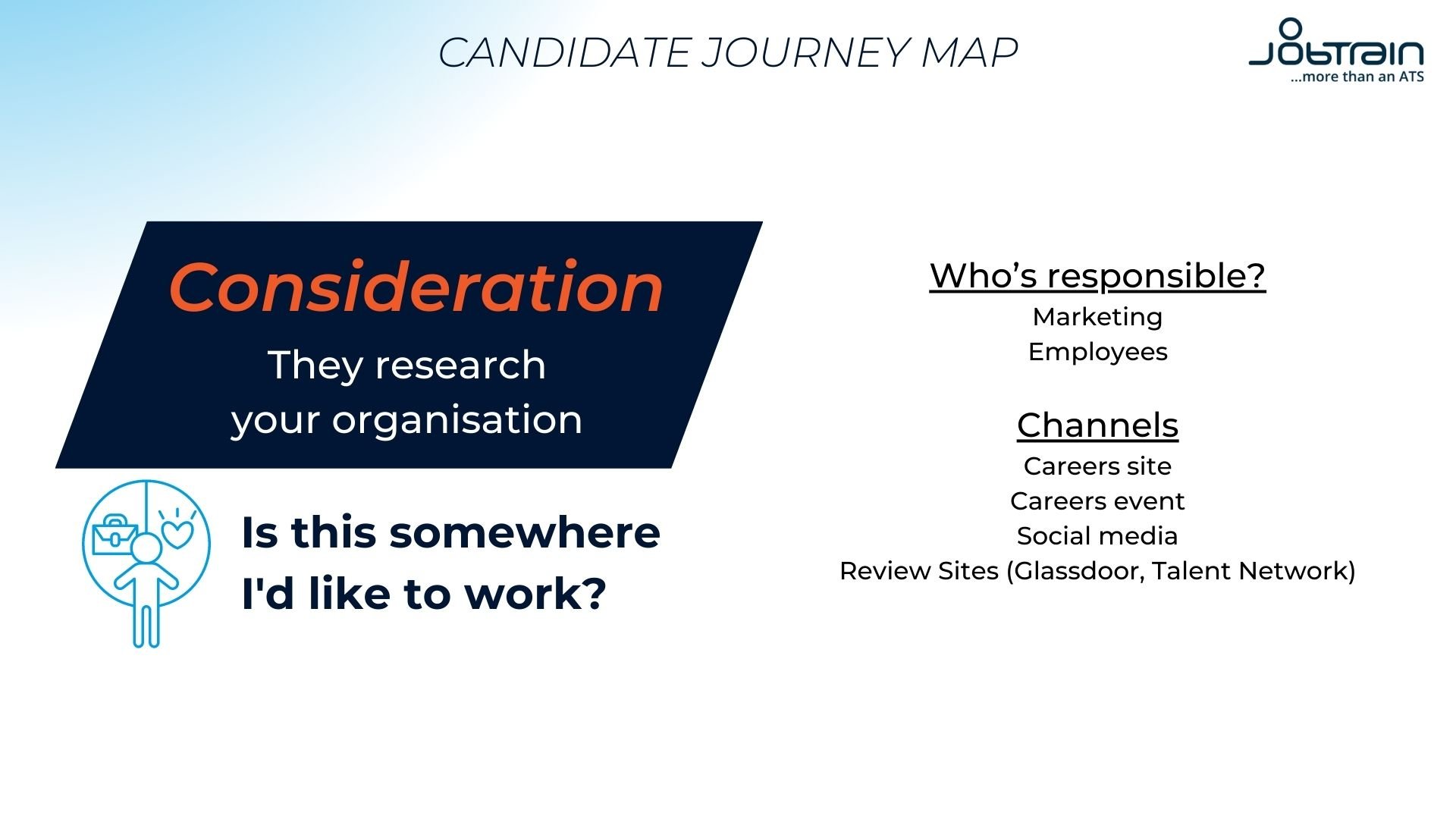 Sophie: For some candidates, the time between the Awareness Stage and the Consideration Stage might be really short, but for others it might be really long. There will be a time variance that we need to be prepared for. Candidates are human beings, they’ve got their own things that might get interrupt the journey.
Sophie: For some candidates, the time between the Awareness Stage and the Consideration Stage might be really short, but for others it might be really long. There will be a time variance that we need to be prepared for. Candidates are human beings, they’ve got their own things that might get interrupt the journey.
Clair: You need to always be moving people through. The goal should be to keep a candidate moving through the journey.
Interest
 Giles: Transparency, consistency, and showing what sets you apart are the three core pillars to focus your candidate experience around. There isn’t a one-size-fits-all approach to creating a great candidate experience. If you’re a care organisation for example, your offering to jobseekers will be very different from what a multi-academy trust will offer.
Giles: Transparency, consistency, and showing what sets you apart are the three core pillars to focus your candidate experience around. There isn’t a one-size-fits-all approach to creating a great candidate experience. If you’re a care organisation for example, your offering to jobseekers will be very different from what a multi-academy trust will offer.
Clair: Authenticity is key. Bring your colleagues into each step of the candidate experience so they can set the scene of what it’s really like, culturally, to be a part of the team.
Sophie: Looking at generational differences, you should consider the digital literacy of your audience. Images and videos are really effective, but there will be challenges! Getting a hiring manager in front of the camera to talk about what makes you different might have obstacles, so having a whole suite of tools in your arsenal means everyone can feel involved in bringing on a new member of the team.
Application
 Clair: Please respond to every application. Whether it’s automated or personalised, in this day and age, you must respond to every application to keep up a candidate’s interest. There are some seriously big brands out there that treat their candidates appallingly. They’re asking them to jump through fire and step on glass, put their CVs in 6 different ways, 6 different times, and they don’t even acknowledge the application! It devalues the recruiter.
Clair: Please respond to every application. Whether it’s automated or personalised, in this day and age, you must respond to every application to keep up a candidate’s interest. There are some seriously big brands out there that treat their candidates appallingly. They’re asking them to jump through fire and step on glass, put their CVs in 6 different ways, 6 different times, and they don’t even acknowledge the application! It devalues the recruiter.
Giles: This means a candidate’s first experience with you is uncertain and anxious. They’ll worry that you won’t even have received their application. Be sure to let a candidate know what happens next!
Sophie: Most – if not all – applicant tracking systems enable you to set up automated thank you e-mails. I’m not saying the same amount of time and effort should be put in by the candidate and the employer, but if you’re asking people to put in that effort, you’ll have to put in some effort in return.
Selection
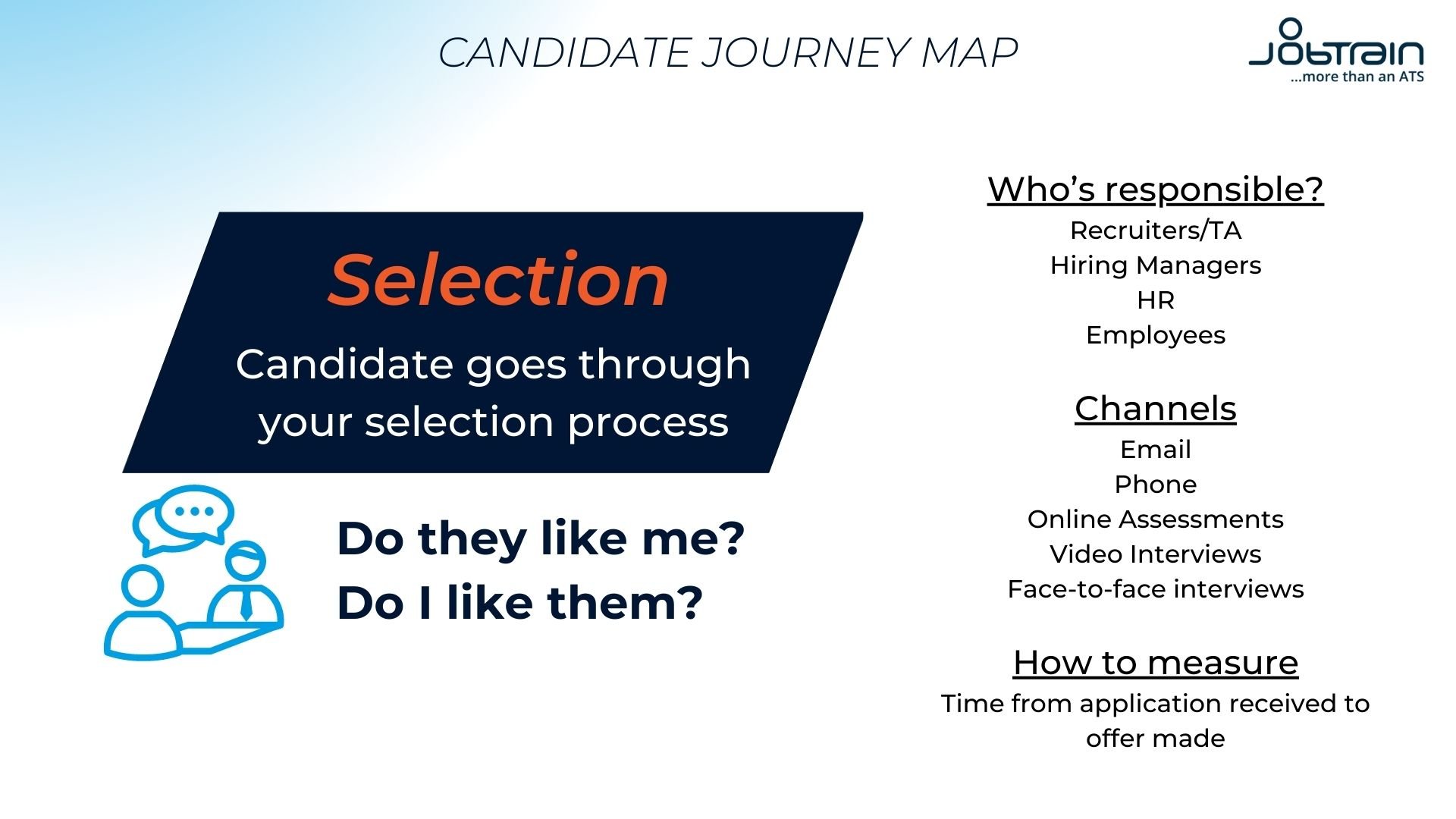 Sophie: A great interview requires a very different skillset from being a great manager or great brand ambassador. Resources and tools could be created by any in-house experts to lean on. What sort of questions should they ask? How do they get the most out of a candidate in an interview?
Sophie: A great interview requires a very different skillset from being a great manager or great brand ambassador. Resources and tools could be created by any in-house experts to lean on. What sort of questions should they ask? How do they get the most out of a candidate in an interview?
Clair: Think about practical questions and try to turn the interview into a discussion. Within – say – an hour, you don’t just want a candidate to regurgitate their CV, you want to get a feel for who they are, what motivates them, and how they’d collaborate with your team. For marketing roles we discuss a hypothetical campaign and look at how they’d think about that project, because it means we can get a feel for how they think.
Onboarding
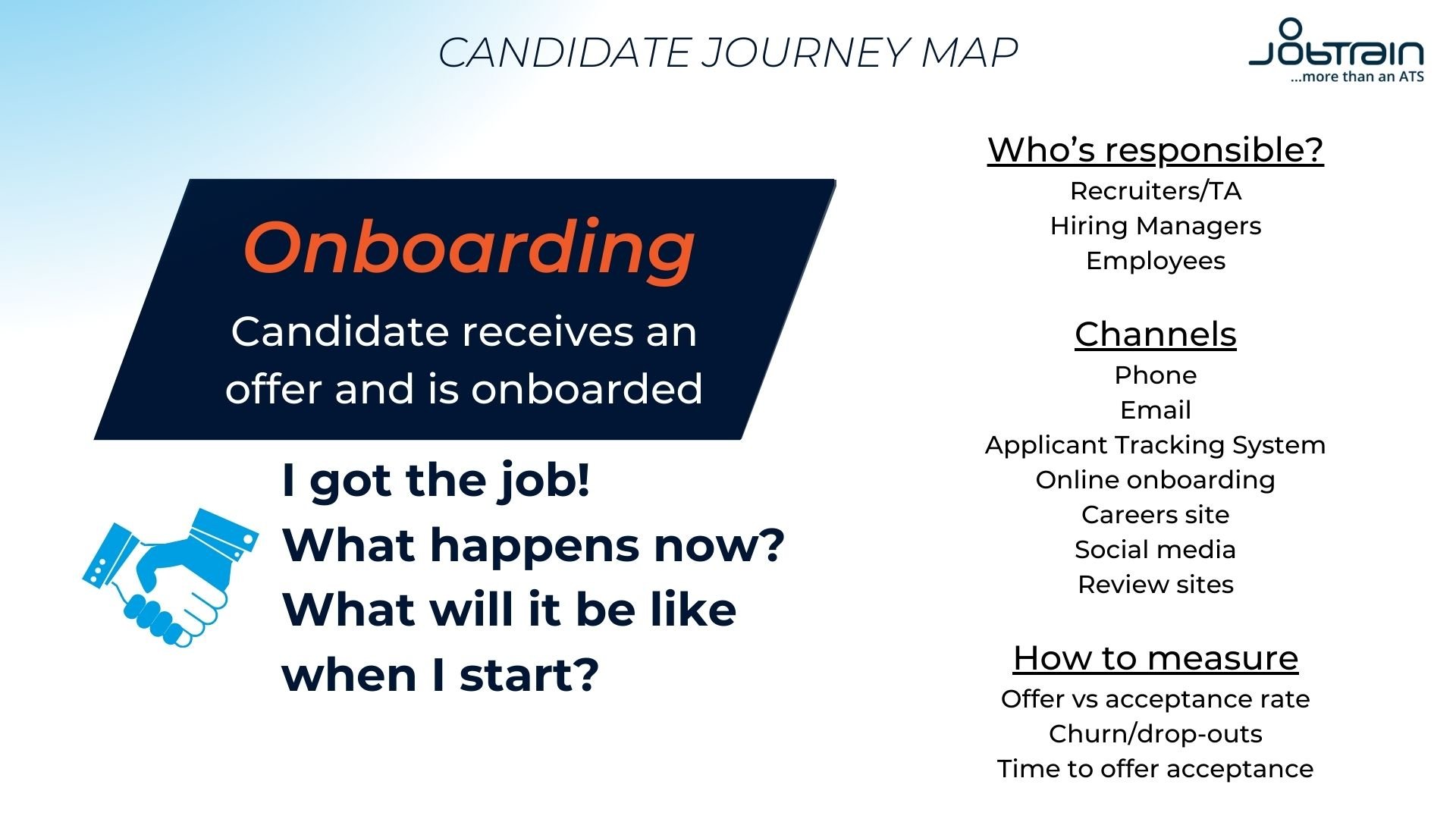 Onboarding is sometimes seen as a form-filling and compliance exercise. In Jobtrain, we talk about the 4 C’s of onboarding! Compliance, Contact, Communication and Culture. Compliance needs to be done, offer letters need to be sent out, virtual right-to-work checks can be sent out at pace (if your ATS supports that integration!) But the other 3 C’s are where we can make a real impact on a candidate.
Onboarding is sometimes seen as a form-filling and compliance exercise. In Jobtrain, we talk about the 4 C’s of onboarding! Compliance, Contact, Communication and Culture. Compliance needs to be done, offer letters need to be sent out, virtual right-to-work checks can be sent out at pace (if your ATS supports that integration!) But the other 3 C’s are where we can make a real impact on a candidate.
Sophie: What’s most important is to be clear on who’s responsible for what. Who leads the compliance process? Who will keep up consistent communication with a candidate? Who sends the contract? If it’s not clear to a candidate, if that process isn’t laid out to them, it can suddenly feel very disjointed! Something I’ve done in a previous role is look at the user experience of that end-to-end process. It was fascinating and scary to go through, but it showed me a lot, so if you’re experiencing drop-off, I completely recommend it!
Giles: We’ve developed a Welcome Hub for our clients to use that lets them stay warm, with clear communication, information, images, videos etc so there’s a one-stop shop for them to connect with the organisation before their start date.
Clair: We could spend a whole section just unplugging all of the touchpoints of onboarding. It’s not just a stage of the candidate experience, it’s a transitionary part that kickstarts the next journey for the candidate. Asking for feedback from your candidate can help you always improve this, so something like a survey, or even a quick chat after 2 months would be really valuable for your recruitment team.
